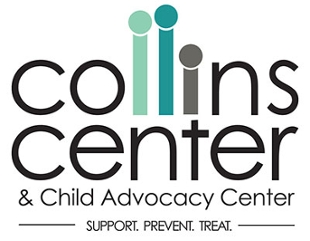Students team up with nonprofit to promote sexual assault awareness
News
Three JMU classes. One nonprofit. One big idea.
This was the slogan of a spring semester project fueled by classes in James Madison University’s School of Writing, Rhetoric and Technical Communication and the School of Media Arts and Design. The classes collaborated with the Collins Center in Harrisonburg, a nonprofit whose mission is to prevent child sexual abuse and provide sexual assault response and treatment.
Their goal was simple: create awareness about sexual violence.
The video, web design and nonprofit communications classes spent hours meeting with Collins Center representatives to identify their needs and come up with a plan. In the end, the students were able to create a multitude of promotional materials such as campaigns, videos, children’s comics and posters. They also redesigned the Collins Center’s website, thecollinscenter.org, to include a new logo and color scheme as well as multimedia content.
The students revealed their work at an event titled “Engaging Voices: Responding to and Preventing Sexual Violence in our Community," which took place May 7 at Harrisonburg's Court Square Theater. The audience was made up of community members, Collins Center team members, JMU students and professors.
Dr. Traci Zimmerman, interim director of WRTC, attended the event and was blown away by the results of the collaboration. “This is invaluable,” she said. “You can’t teach this kind of stuff in class. This is really the kind of partnership that we’re about.”
“Projects like this closely mimic real-world work scenarios,” added Shelley Hokanson, assistant professor of SMAD, “so students gain experience that is authentic to their future careers and not just academic in nature.”
The event concluded with a panel made up of a sexual assault survivor, professional therapists and a student from the Writing for Nonprofits class. The survivor was so moved by the students’ work that he planned to take some of it back to Indiana with him in order to help fight for survivors’ rights there.
Dr. Seán McCarthy, assistant professor of WRTC and one of the project’s leaders, sees this type of collaboration as beneficial to everyone involved. “The instructors learn how to use new media and collaboration and contemporary work practices; the students get really hands-on professional development; and of course the community partner benefits from the students’ creativity and ability to hone and amplify their message.”
Over the course of the semester, the students became invested in the project and wanted to ensure that they were delivering the best possible product to the Collins Center.
Melissa Fisher, the center’s interim executive director, said her team wasn’t sure what to expect when they first agreed to the collaboration. However, they were incredibly happy with the results.
“We were so impressed with the quality of the work of all the students and the faculty,” she said. “It really exceeded our expectations when we went into the collaboration at the beginning of the semester. It’s such valuable content for us to be able to use as we try to spread the word about our agency and what we do and also bring light into the topic of sexual assault.”
Fisher believes projects like this help position JMU and Harrisonburg-Rockingham County as leaders on the issue.
“It’s a really exciting time for us when we think of the national news that the federal government is really challenging universities across the country to step up their response to preventing sexual assault and protecting students,” Fisher said. “To think that we’re a step ahead with the students already working on getting the dialogue going — it comes at a really great time.”
For Kelley Galownia, a May graduate of JMU, working with the Collins Center and starting this kind of dialogue opened her eyes to a new future in which she can use the skills she gained to help make a difference in the world.
“I was originally looking at going into careers that were more corporate, so the biggest takeaway that I had was that path is not for me,” Galownia said. “I need to start looking at more nonprofits because I think that the work is really moving. To think that I can make a living off of doing what we did in the class and helping people and using what we learn in WRTC to make that happen — I think that’s really great.”
Zimmerman believes this project is a shining example of JMU fulfilling the role of the “engaged university.”
“It’s not something we have to aspire to. We’re doing it right now,” she said. “And it just makes me incredibly proud to be a member of WRTC, to be colleagues with SMAD, and to have such outstanding students.”
###
Jen Eyring (’14)

